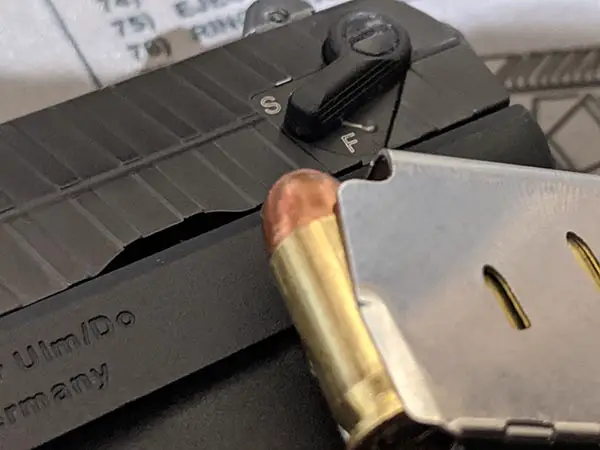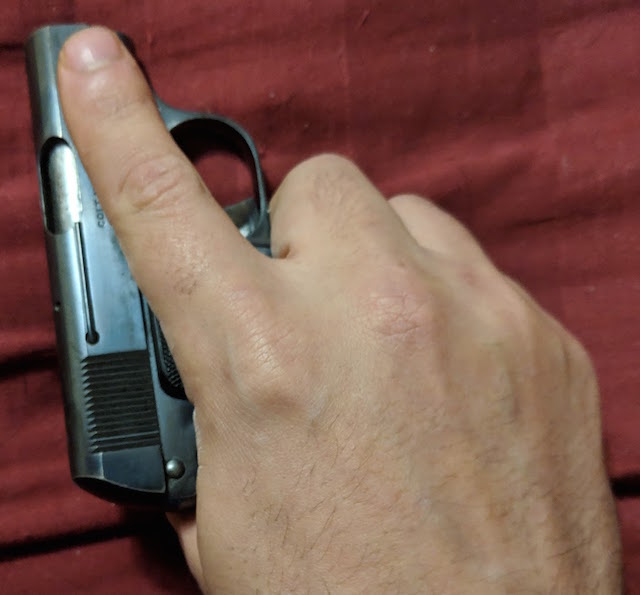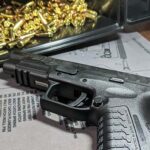After purchasing my Walther Pk380, I had some trouble using the factory labels for the guns’ safety. It would seem fairly obvious, since there was a simple lever and an “S” and an “F”. Surely, if the lever is on “S” the weapon was safe, right? Well, if you’re confused by German engineering or are just looking for a general tutorial on gun safeties, look no further.
After perusing the internet, I found that there wasn’t a comprehensive guide to tell whether a guns safety was engaged. Well there’s a couple different ways to tell if your guns’ safety is on. Before I continue, you should ALWAYS consult the Owners Manual (or contact the manufacturer) for information about your guns’ safety. Features can vary from manufacturer to manufacturer and model to model. However, here are examples I’ve found fairly consistent.
Table of Contents
Selector Switch On Fire, Means Gun Goes Bang
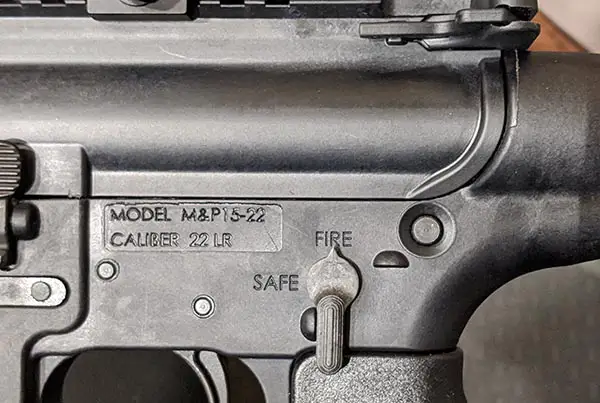
Many rifles have a selector switch that will determine whether the safety is engaged. Pictured above is my Smith and Wesson M&P 15 chambered in .22lr. Notice the arrow on the selector switch pointing to “Fire.” This rifle does not have the safety engaged! Chances are if you’re fortunate enough to have this then telling if the gun safety is on, is not a problem for you.
Red You’re Dead, The Safety Is Off
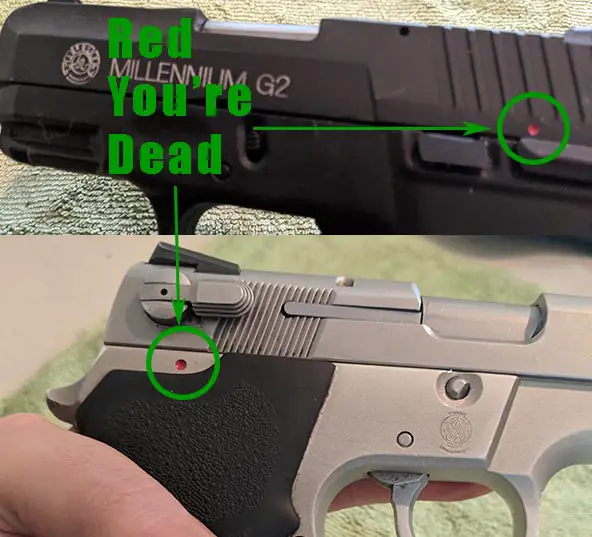
Another sign that your weapon is not on safe, is when you see red. Usually, there is a red dot on the firearm, that when visible means the firearm is ready to fire. The first gun above is a Taurus G2 Millenium with the safety disengaged. To engage the safety you would have to press up for that model. Below that is the Smith & Wesson Model 6906 with the safety off. Contrary to the G2, you press down on the lever to engage that safety. Depending on your pistol model, moving the safety lever up, or down, can expose the red dot. Suffice it to say, you should contact your manufacturer to ensure the firearm is safe.
Safety Lever Direction
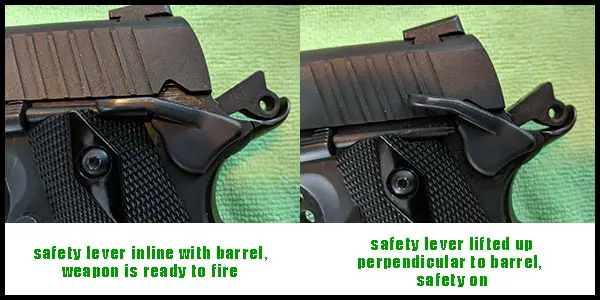
Another subtle way to tell whether the gun safety is on or not, is by looking at the direction of the safety lever. Usually, if the lever is aligned with the barrel, the guns’ safety is disengaged. However, this is not always the case. As an example of when this is not true, see the selector switch in the first section.
Although this is not always the case, observing the orientation of the lever can aid in determining if a pistol is on safe. This is not a foolproof method. You’ll notice both the G2 and the S&W from the previous section move the lever perpendicular to the barrel to engage the safety.

Remember I was talking about those crazy Germans and their designs. Well, pictured above, are the two options for the safety on my PK380. You’ll notice there is no color coding on this particular handgun. In which instance is the gun on safe? Traditional knowledge says that when the selector is on “S” the safety is engaged. That would be incorrect. Since the “F” is revealed and the lever is inline with the barrel. Therefore, the firearm safety is not on in figure B.
Other Ways To Tell If A Gun Is On Safe
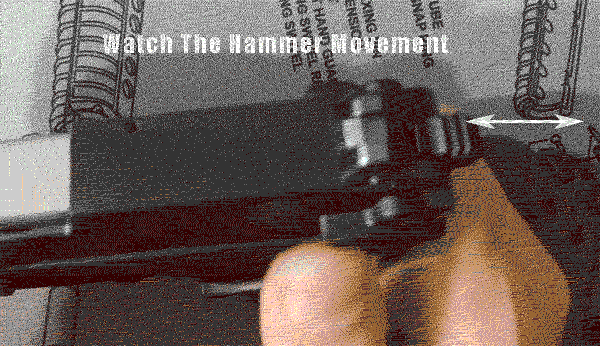
Yet another way to tell if the safety is engaged is by observing the hammer on the pistol. Not all pistols will do this, but the above animation illustrates the position change of the hammer on the PK380 when the safety is engaged or not. Sometimes when the safety is engaged, the hammer position will seat a greater distance away from the firing pin, as opposed to making direct contact. The hammer position shift can be subtle and not apparent unless you are actively looking to see if the safety is on or off.
Guns With Internal Safeties
Not every handgun has an external safety. Glocks for instance have “passive” safeties that engage without active input from the user. These include the “trigger, firing pin, and drop safeties” outlined here. Unfortunately, I am not aware of any way to discern if these safeties are engaged for these types of guns.
Parting Shots
All of these methodologies for determining whether the safety is on or off are secondary measures to the manufacturers instructions. ALWAYS, always, always consult your guns owners manual for details. The above illustrates consistencies I’ve found are not to be used in lieu of manufacturer instruction. Additionally, ensure you follow the primary gun safety rules. Do you have any comments or clarifications? Do any of these tests not work with your handgun? Please leave a comment below for others.
